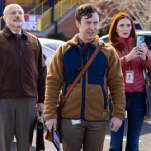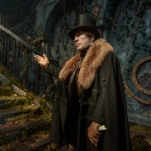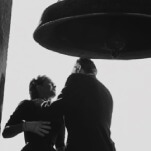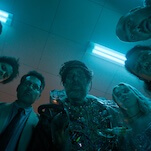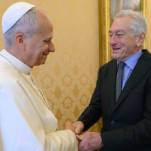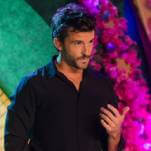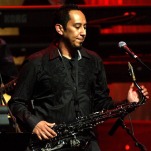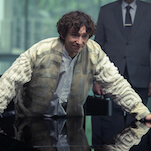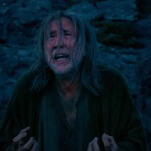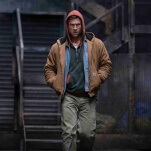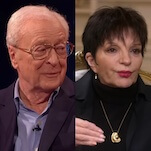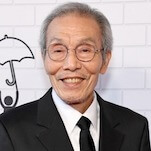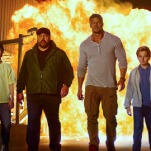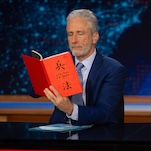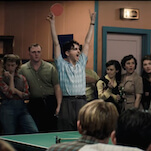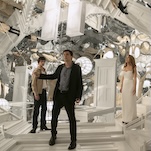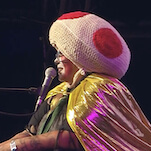Code Unknown
Though Michael Haneke’s brilliant 2000 puzzle-picture Code Unknown predates the current wave of self-important, everything-is-connected social dramas like Crash or Babel by several years, it could retroactively serve as a stinging critique of them. Crash and Babel specifically make big statements on racism and violence, respectively, through the “butterfly effect,” with single events that ripple through a city—or in Babel’s case, the globe—and destroy people’s lives. But getting the message across involves a mass of writerly contrivances: Suddenly, what’s meant to appear as a random series of events could not be less spontaneous, and the elaborate latticework of the script winds up servicing a single, banal, easily digestible statement, like “Violence is bad” or “Gee, Los Angeles isn’t the post-racial utopia you thought it was.” The screenwriters may be fine architects, but there’s nothing in the house.
The subtitle of Code Unknown is just the first hint that it will do something different: “Incomplete Tales Of Several Journeys.” Composed of roughly 50 or so scenes, most shot in one continuous long take apiece, the film follows a cross-section of Parisians from different walks of life—some of them tightly connected, others separated by a degree or two. Together, they’re one giant, metaphorical organism representing, among other things, the failures of Western multiculturalism, even in one of the world’s most cosmopolitan cities. Yet the word “incomplete” makes all the difference: Code Unknown is just as elaborately worked out as those other everything-is-connected movies, but the pieces don’t fit neatly together. It’s full of jagged edges, with each scene beginning in medias res and ending abruptly in a hard cut to black, often a beat or two before we might anticipate. Haneke asks us to ponder not just the information onscreen, but the information we don’t know, might learn later, or will never know at all. This is a movie that tends to inspire frustration on first viewing, revelation on second viewing, and full-blown blog-a-thon obsession thereafter.
Take, for example, the big inciting incident, where most of the film’s major characters come together briefly, then splinter apart in different directions. It all starts with an act of terrible callousness: A sullen teenager, Jean (Alexandre Hamidi), crumples a bag and casually tosses it into the lap of Romanian beggar Maria (Luminita Gheorghiu) as she sits on the pavement waiting for change. He might have gotten away with it—Maria, accustomed to being treated like garbage, doesn’t say a word—but Amadou, an earnest young man of African descent, witnesses the act and angrily confronts Jean on the street. Then several others get involved, including a local shop owner, Jean’s brother’s girlfriend Anne (Juliette Binoche), and finally, the authorities. Here’s how it plays out in full:
Here’s what we can glean from the scene itself: The only ones who know what really happened are the three people involved. Others late to the action completely misinterpret it, including the shop owner (who thinks Jean and Amadou are a couple of hooligans), Anne (who’s naturally protective of Jean, the one in the wrong), and the police (whose no-doubt race-based assumptions anger Amadou, which gets him into further trouble). That much is clear from the five-minute fragment Haneke shows us. (And let us pause for a moment to admire the technical wizardry of capturing it all in one long take that somehow doesn’t call attention to itself.) The context and consequences of the incident come later, when we learn more about the characters. We learn that Jean, for example, owes his adolescent petulance to an ongoing conflict with his father (Sepp Bierbichler), who wants him to take over the family farm. In the moments before tossing the bag, Jean has come to Anne looking for a place to stay, because he’s just run away from home; without that agitation, he might have shown a little more sensitivity. At the same time, Amadou perhaps overreacts to the situation, because he sees in Jean’s actions the terrible contempt with which privileged Frenchmen treat his family and other immigrants in the city. This just happened to be the moment that set him off, and Jean just happened to be spoiling for a fight. On top of all that, there’s the irony that Amadou the good Samarian winds up exposing the woman he was trying to protect: Now Maria, swept up by the police without identification, will have to be deported back to her homeland.
So what have we learned from that scene? We learned that people (including the audience) assume a lot, but often don’t know anything. We learned that Paris is a powder keg of simmering ethnic tensions that occasionally boil over. We learned that the simplest of incidents, due to false assumptions and willful ignorance, can be completely misinterpreted—in this case with unknown consequences. And above all, we learned that communication has broken down: The masses literally and figuratively don’t speak the same language (Code Unknown is in French, Arabic, German, Romanian, Malinka, English, and French Sign Language), and the precious quality known as empathy—you know, the one that currently has conservative Supreme Court watchdogs up in arms—isn’t easy to come by. In Haneke’s cynical world, people are bound to look at everything through the prism of their own experiences.
Produced after 1997’s Funny Games—still his most talked-about and polarizing film, and freshly so after he remade it virtually shot-for-shot in English 10 years later—Code Unknown represents a shift in tone for Haneke, whose studied sadism earned him the title of Europe’s “philosopher of violence.” Perhaps because Code Unknown lacks the overt provocation and moral scolding of his other work, it tends to be a favorite among Haneke haters. But make no mistake: Violence continues to be the force that tears away at the social fabric, and its subtler presence here doesn’t make it any less profound. Granted, there’s a difference between the paper-bag kafuffle in Code Unknown and, say, the ritual torture and murder of a bourgeois family in Funny Games, but Haneke is interested in violence of all kinds, as well as our relationship to it as spectators and citizens. He also presages the racial divisions at the heart of his most popular film, 2005’s Caché, which turns on the enduring legacy of French colonialism in Algeria.



